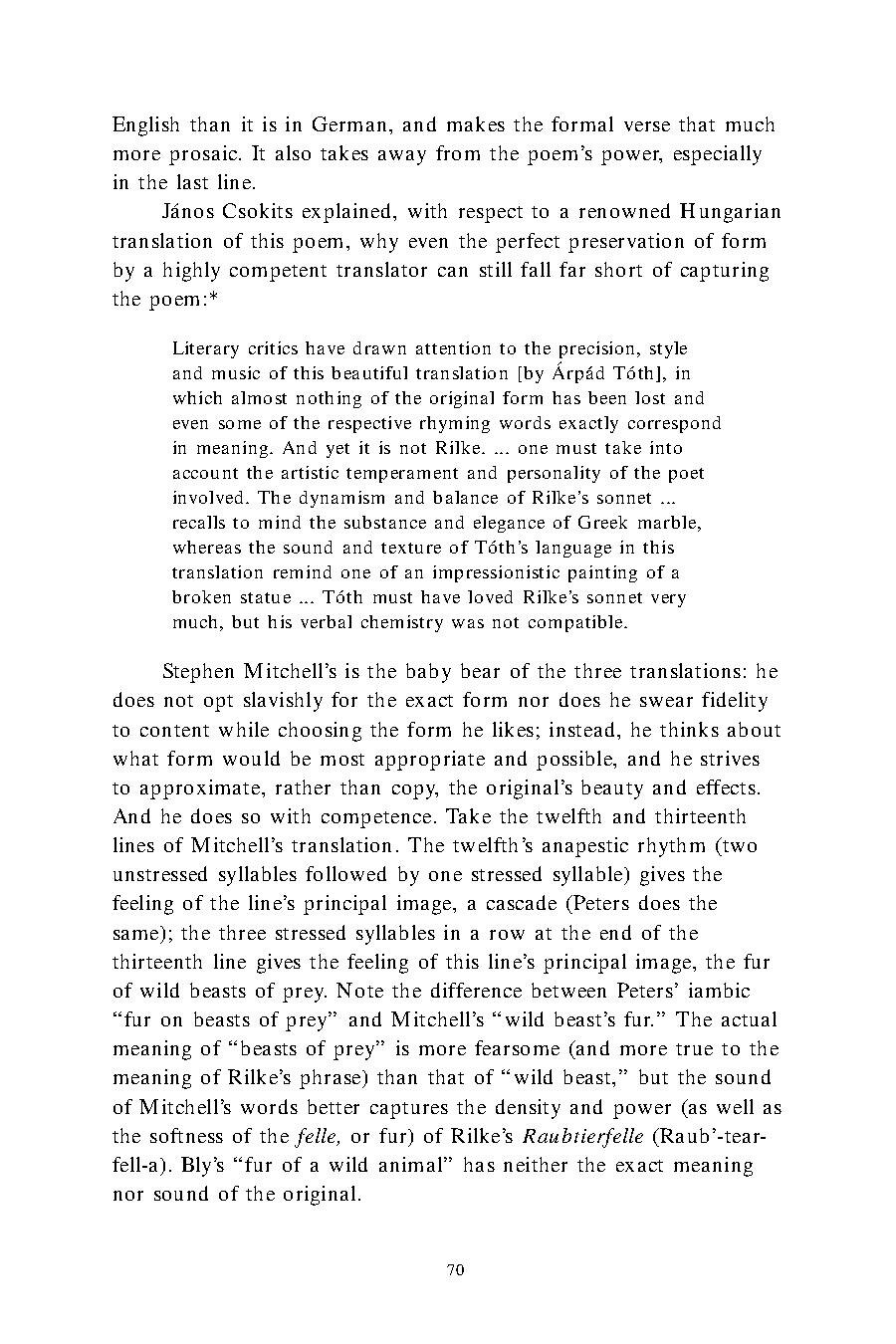English than it is in German, and makes the formal verse that much more prosaic. It also takes away from the poem’s power, especially in the last line. János Csokits explained, with respect to a renowned Hungarian translation of this poem, why even the perfect preservation of form by a highly competent translator can still fall far short of capturing the poem:* Literary critics have drawn attention to the precision, style and music of this beautiful translation [by Árpád Tóth], in which almost nothing of the original form has been lost and even some of the respective rhyming words exactly correspond in meaning. And yet it is not Rilke. ... one must take into account the artistic temperament and personality of the poet involved. The dynamism and balance of Rilke’s sonnet ... recalls to mind the substance and elegance of Greek marble, whereas the sound and texture of Tóth’s language in this translation remind one of an impressionistic painting of a broken statue ... Tóth must have loved Rilke’s sonnet very much, but his verbal chemistry was not compatible.
Stephen Mitchell’s is the baby bear of the three translations: he does not opt slavishly for the exact form nor does he swear fidelity to content while choosing the form he likes; instead, he thinks about what form would be most appropriate and possible, and he strives to approximate, rather than copy, the original’s beauty and effects. And he does so with competence. Take the twelfth and thirteenth lines of Mitchell’s translation. The twelfth’s anapestic rhythm (two unstressed syllables followed by one stressed syllable) gives the feeling of the line’s principal image, a cascade (Peters does the same); the three stressed syllables in a row at the end of the thirteenth line gives the feeling of this line’s principal image, the fur of wild beasts of prey. Note the difference between Peters’ iambic “fur on beasts of prey” and Mitchell’s “wild beast’s fur.” The actual meaning of “beasts of prey” is more fearsome (and more true to the meaning of Rilke’s phrase) than that of “wild beast,” but the sound of Mitchell’s words better captures the density and power (as well as the softness of the felle, or fur) of Rilke’s Raubtierfelle (Raub’-tearfell-a). Bly’s “fur of a wild animal” has neither the exact meaning
nor sound of the original.
70
